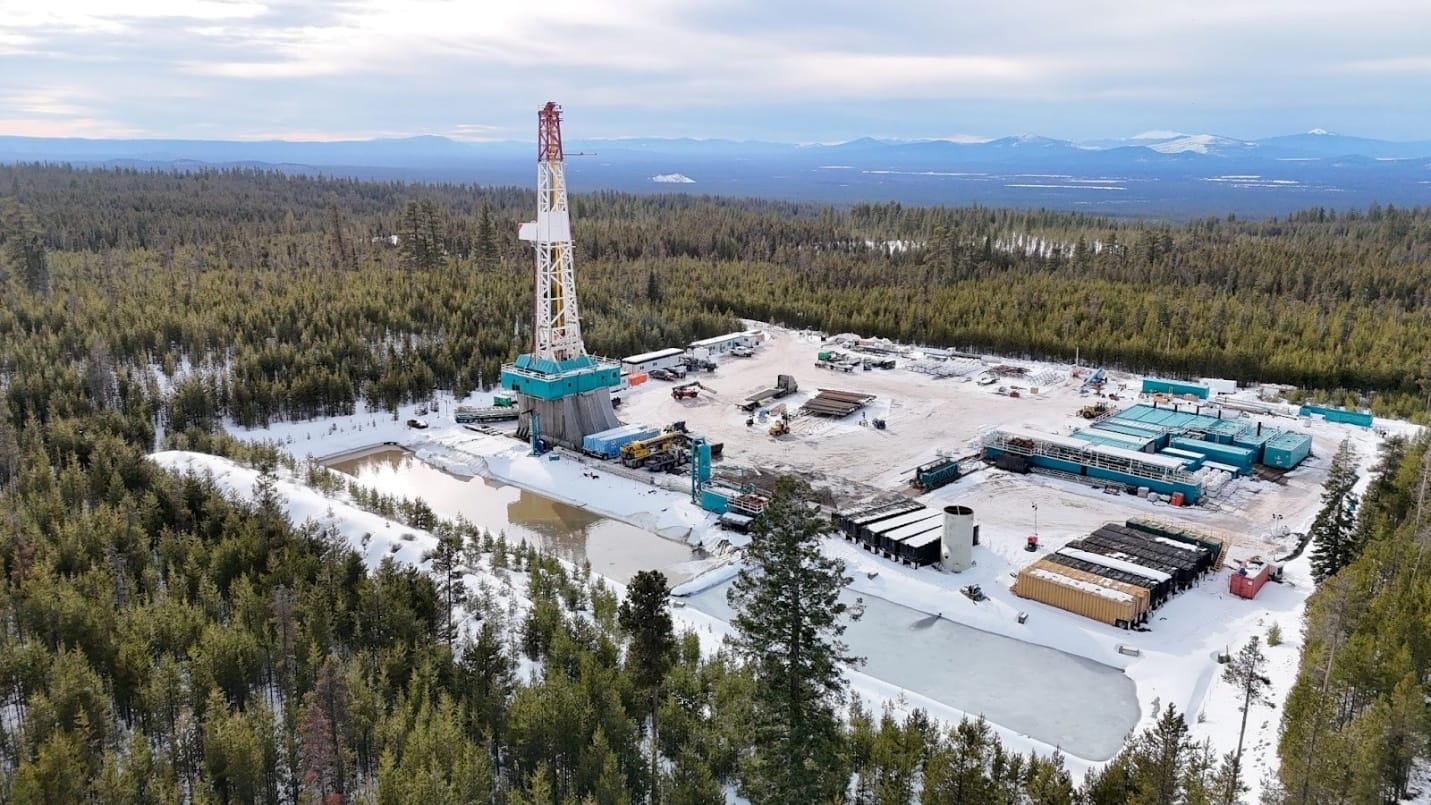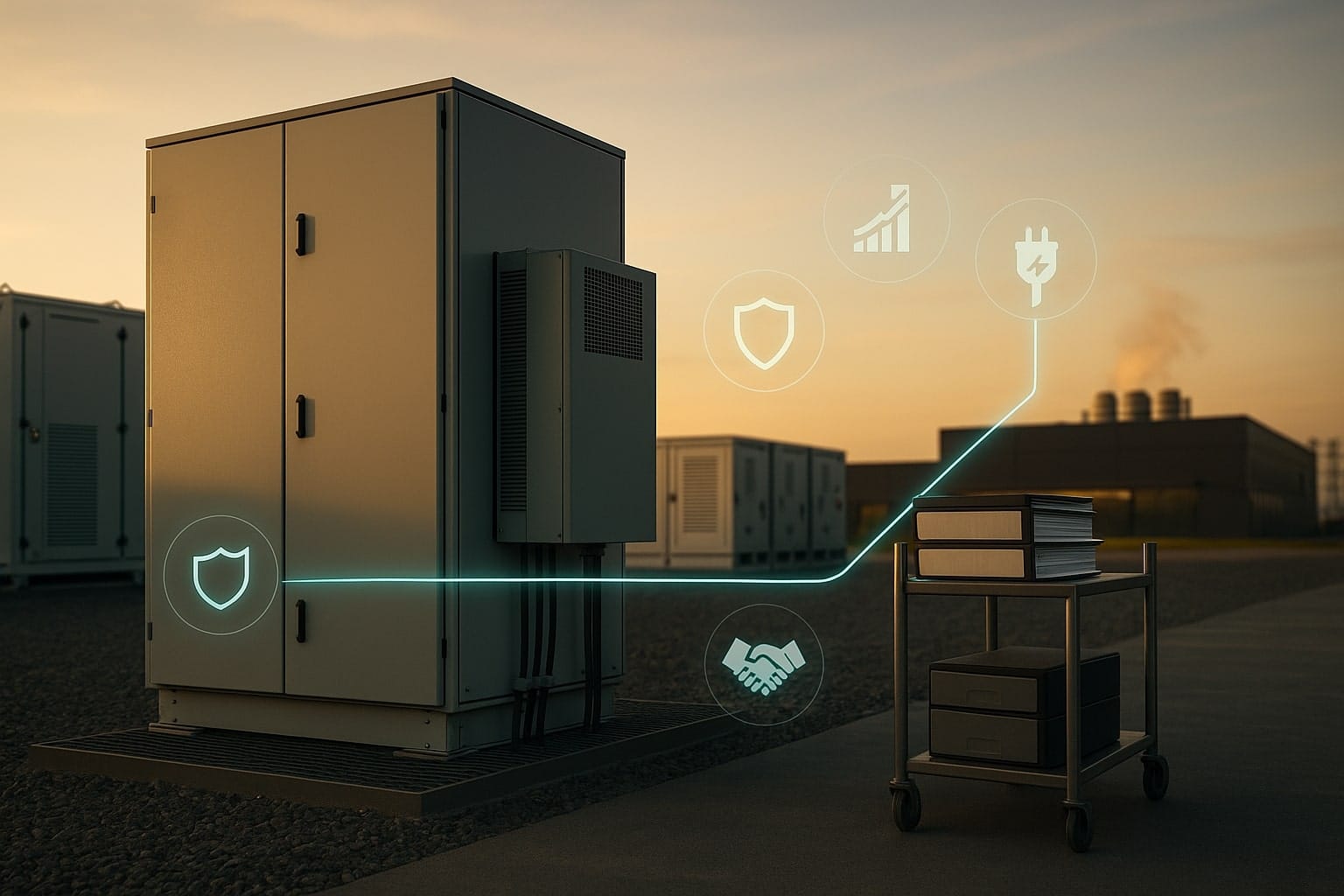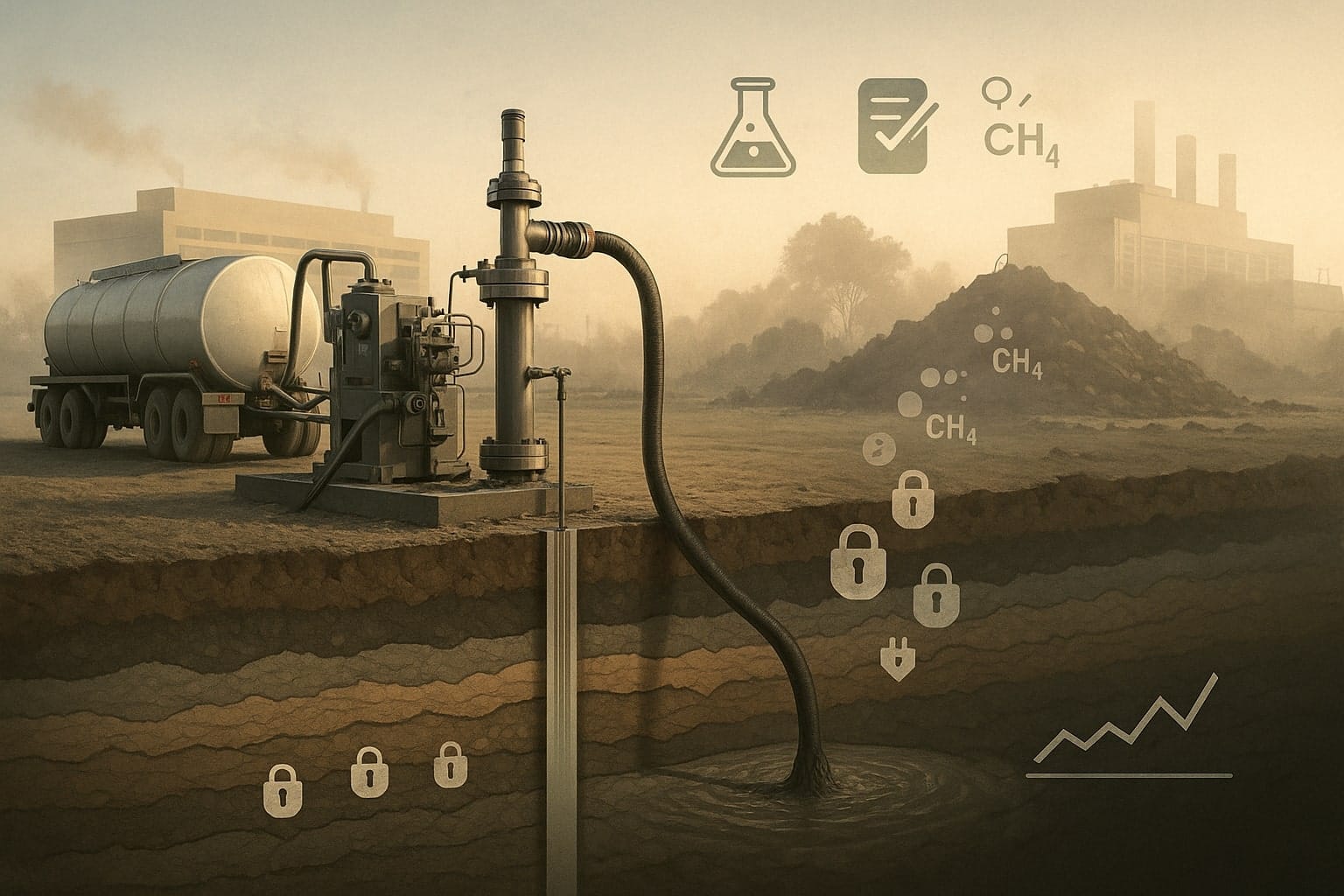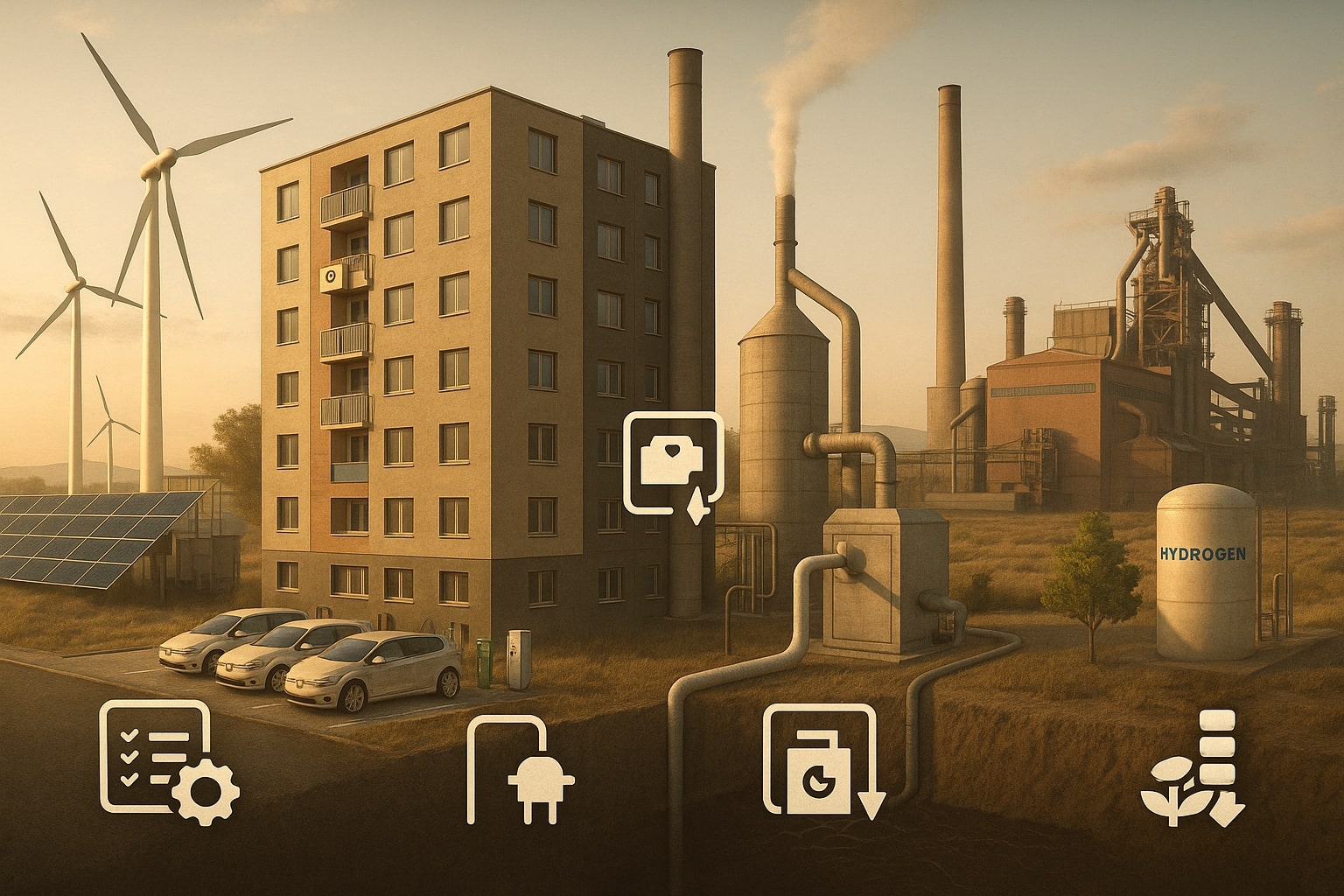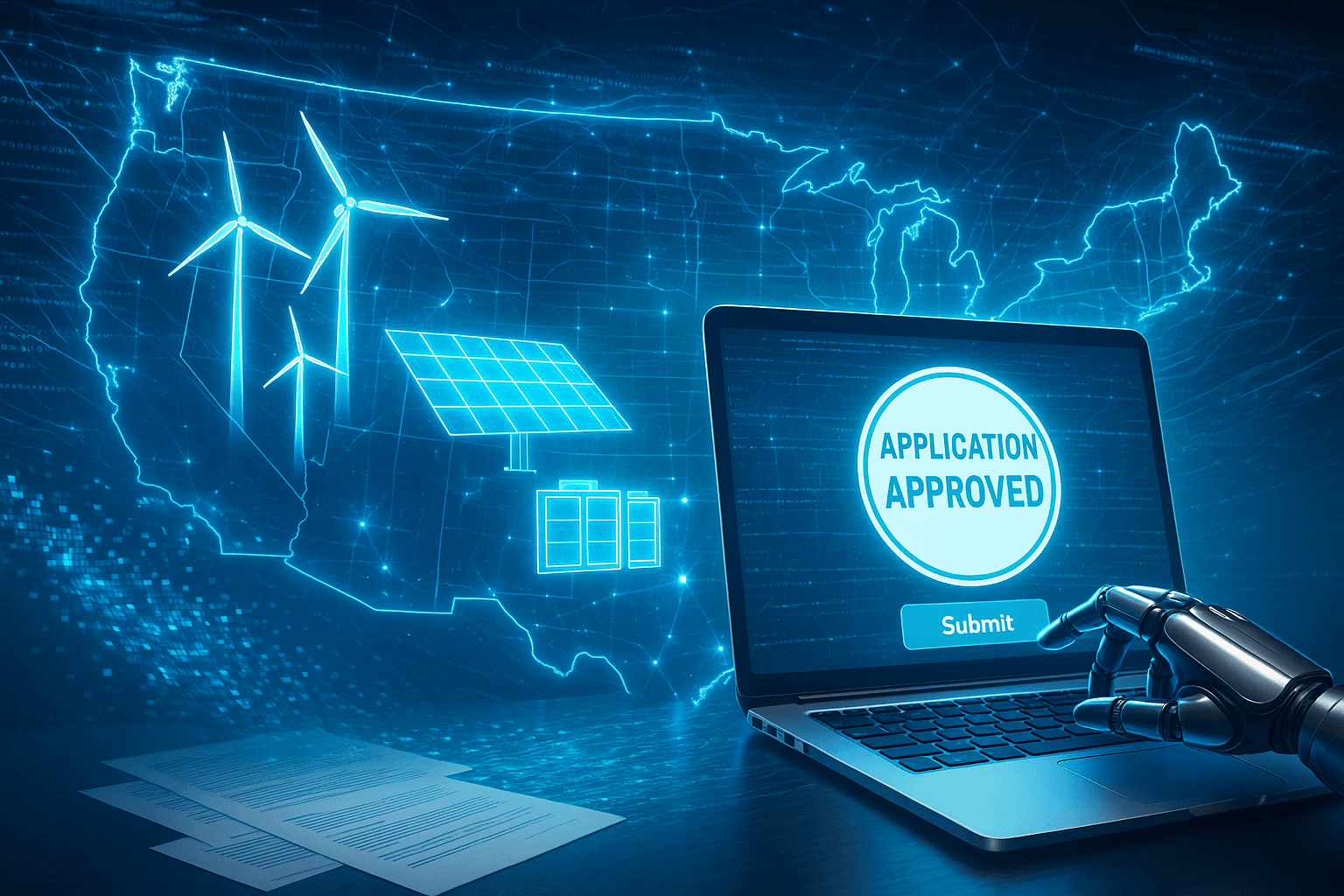As AI data centers drive up emissions and power demand, Big Tech is racing to lock in “durable” carbon removal credits—sending prices soaring, squeezing other buyers, and quietly reshaping the entire carbon market.
The climate story of AI has mostly been told in terms of electricity and water: how much power a single data center needs, or how many Olympic swimming pools of cooling water a hyperscale campus might consume.
But at COP30 in Belém, Brazil, another part of the story burst into view: the way that AI’s carbon footprint is colliding with a tiny, high-end corner of the carbon market—durable carbon removal credits.
In mid-November, Reuters reported from COP30 that surging demand from tech giants like Microsoft and Google for “durable” removal credits—biochar, direct air capture (DAC), enhanced rock weathering and similar long-lived sinks—has already pushed their prices to almost four times those of cheaper, traditional offsets linked to forest preservation projects.
Big Tech’s buying spree is concentrated in a market that is still almost absurdly small:
- Buyers purchased around 8 million tonnes of durable carbon removal in 2024.
- By late 2025, that figure was already 25 million tonnes, driven heavily by Big Tech.
- Yet fewer than 1 million tonnes worth of durable-removal credits have actually been verified and issued so far, according to tracker CDR.fyi.
At the same time, Morgan Stanley estimates that the global data-centre industry will emit about 2.5 billion tonnes of CO₂-equivalent between now and 2030—roughly 40% of what the entire United States emits in a single year.
Even if every tonne of those 25 million purchased removals materialised tomorrow, it would cover only about 1% of that projected data-centre carbon tab. The credits aren’t big enough to solve Big Tech’s problem. But Big Tech is already big enough to transform the carbon removal market.
Table of Contents
ToggleThe AI boom is an energy story first
Start with the basics: AI is an energy story long before it is a carbon-credit story.
The International Energy Agency’s Electricity 2024 report estimates that data centres consumed around 460 terawatt-hours (TWh) of electricity in 2022 and could exceed 1,000 TWh by 2026—roughly the annual power use of Japan.
A separate IEA analysis, Energy and AI, projects that:
- Global data-centre power demand could double by 2030 to about 945 TWh,
- representing just under 3% of total global electricity consumption,
- with data-centre demand growing around 15% per year between 2024 and 2030—over four times faster than overall electricity demand.
The Guardian’s summary of the same report notes that AI-specific data centres alone are on track to quadruple their electricity consumption by 2030, and that a single large data centre today can consume as much electricity as 100,000 households, with some of the newest facilities expected to require 20 times more.
Put differently: AI is turning data centres into one of the fastest-growing categories of electricity demand on the planet. If the additional load is not matched with clean power, the result is straightforward—more fossil generation, more emissions, and more pressure on companies that have promised to hit net-zero or even “carbon-negative” targets by 2030.
That is where the carbon removal market comes in.
Why Big Tech suddenly cares about “durable” removals
Most of the carbon offsets we’ve argued about for the last decade have been avoidance credits: paying someone not to deforest a patch of land, or to build a renewable plant instead of a coal plant. Those can be useful, but they don’t actually pull carbon out of the atmosphere—and their real-world impact has often been shaky.
By contrast, carbon dioxide removal (CDR) projects aim to:
- Capture CO₂ directly from the atmosphere or from biomass that recently absorbed it, and
- Store it for long periods—ideally centuries to millennia.
A recent guide to the CDR market from the International Air Transport Association (IATA) highlights how regulators and scientists increasingly classify removals by durability:
- High-durability removals store carbon for 10,000 years or more (e.g., CO₂ injected into deep geological formations).
- Medium-durability solutions hold carbon for centuries to millennia (biochar in soils, mineralization).
- Lower-durability approaches may keep carbon out of the air for decades to centuries, such as some land-use changes.
For a sector like Big Tech—high margin, under public scrutiny, and facing rapidly rising data-centre emissions—the trade-off is clear:
- Cheap, nature-based credits (~US$20–50 per tonne for high-quality reforestation) can help, but may not pass future integrity tests.
- “Durable” removals like DAC, biochar, BECCS and enhanced rock weathering can cost 50–100 times more than traditional avoidance credits—but they’re easier to defend in a board meeting or a climate lawsuit.
Those economics mean only a tiny club of companies can really afford to lean into durable removals today—and that club looks a lot like the Nasdaq-100.
Fastmarkets analysis suggests that in 2024, Microsoft alone accounted for around 64% of all durable CDR purchases, and that when you combine Microsoft with other members of the Frontier CDR Buyers coalition (Google, JPMorgan, Stripe, Shopify and others), this group made up roughly 80% of the entire durable removals market.
In the first four months of 2025, Microsoft is estimated to have signed US$2–4 billion worth of long-term CDR contracts, even though those tonnes will be delivered over many years.
If you’re a smaller company trying to buy a few thousand tonnes of durable CDR to back a net-zero pledge, you’re now walking into a market that has already been shaped—on volume, pricing and contract structure—by a handful of tech giants.

A tiny market with a Big Tech-sized footprint
The supply-demand imbalance shows up starkly in the numbers coming out of COP30 and related market reports:
- $10 billion has been committed to durable removals since 2019, counting both spot purchases and long-term offtake agreements, according to CDR.fyi data cited by Reuters.
- Purchases jumped from 8 million tonnes of durable removal credits in 2024 to 25 million tonnes in 2025, with Isometric’s chief commercial officer explicitly pointing to Big Tech as a key driver.
- Yet fewer than 1 million tonnes’ worth of durable credits have actually been issued so far; most projects are still building, verifying or ramping up.
- Across the broader market, commitments—contracts for future CDR deliveries—are closing in on 40 million tonnes of removals.
You can think of this as a market where financial commitments are scaling fast, but physical tonnes lag far behind. That’s uncomfortable for everyone:
- Developers need firm offtake agreements and finance to build plants.
- Buyers need the delivered tonnes in time to hit 2030 and 2040 climate milestones.
- Regulators and NGOs worry about double-counting, non-delivery and the risk of CDR being used as an excuse for slower real-world decarbonisation.
To complicate matters, durable CDRs are expensive. Fastmarkets notes that DAC today typically costs around US$1,000 per tonne, with leading developers targeting US$400–600 by 2030 and roughly US$250 by 2050. Biochar and BECCS projects are cheaper, often under US$200 per tonne, with some aiming for US$50–100 over the next decade.
Against that backdrop, Big Tech’s willingness to buy multi-year portfolios of DAC, BECCS and biochar credits at premium prices is both a blessing and a curse: it de-risks the first wave of projects, but it also concentrates supply in a few corporate hands.
When buyers start building their own carbon supply
One of the more eye-catching developments is that some data-centre operators are no longer content to be just buyers; they’re becoming project owners.
Reuters reports that Pure Data Centres Group, which runs facilities for large tech clients, plans to spend £24 million (~US$31.6 million) on what it says will be the UK’s largest biochar plant, in Wiltshire. The plant aims to scale up over 18 months to remove 18,500 tonnes of CO₂ per year, with three additional sites planned.
The logic is straightforward:
- High-quality credits are scarce and expensive.
- If you vertically integrate—owning both the emissions source (data centres) and the removal asset (biochar plants)—you gain more control over price, quality and delivery.
Something similar is happening further up the food chain, where Big Tech is backing project developers directly:
- Google recently agreed its biggest-ever carbon-removal deal, financing Amazon reforestation via Brazilian startup Mombak to generate around 200,000 tonnes of carbon removal credits.
- Frontier and similar coalitions are signing large offtake contracts with DAC, BECCS and enhanced-weathering developers, effectively anchoring the first commercial plants in several niches.
On paper, this is exactly what many climate economists hoped for: wealthy first-movers underwriting expensive early projects so that costs can fall for everyone later.
But for other sectors that also need CDR—airlines under CORSIA, heavy industry in Europe under future ETS rules, or governments procuring removals to meet national targets—the optics of a Big-Tech-dominated supply curve are uncomfortable.
Who gets crowded out?
Aviation is a good example of the tension. IATA’s guide to the CDR market notes that as of mid-2025, only a handful of CDR methodologies are approved for use in the international aviation offsetting scheme (CORSIA), and even there, removals and traditional offsets are largely treated the same way.
At the same time:
- Airlines operate with thin margins and are highly sensitive to ticket prices.
- Many will struggle to pay US$500–1,000 per tonne for DAC-based removals while still competing with carriers that don’t.
In Fastmarkets’ analysis of around 17,000 companies, only about 1% currently have the profit-per-tonne of emissions to afford a Microsoft-style portfolio of high-end CDRs. Even if that share rises to about 2,200 companies by 2050, the bulk of the global economy will still operate with much tighter carbon budgets.
In other words:
- The sectors most able to pay for expensive removals (Tech, Finance, Business Services) are not always the sectors that most need them to deal with hard-to-abate emissions.
- As Big Tech buys up early-stage supply, other sectors face a choice:
- Wait for costs to fall and hope regulators give them more time, or
- Rely on cheaper, less durable credits that may not age well under future rules.
For smaller corporates trying to do the right thing—say, a mid-sized manufacturer or logistics company that wants a 2030 net-zero badge—there is a real risk of being squeezed out of the “high-quality” end of the market altogether.
Is the Big Tech land-grab a bug or a feature?
There are two ways to look at what’s happening.
1. The optimistic view: Big Tech is paying to de-risk the future
From this angle, Big Tech is doing precisely what climate economists have been asking of wealthy first-movers:
- Paying way over future cost for early DAC, BECCS and biochar credits;
- Signing long-term offtake contracts that make projects bankable;
- Accepting the technology and policy risk of a new market.
Fastmarkets estimates that under a high-demand scenario, the market value of delivered durable CDR could grow from less than US$0.1 billion in 2024 to US$50 billion by 2040, and over US$100 billion by 2050, if cost declines and corporate willingness to pay both materialise.
On this path, a Big-Tech-driven “CDR affordability boom” could eventually leave a much larger, cheaper pool of removals for everyone else.
2. The pessimistic view: carbon inequality in the age of AI
The darker interpretation is that we’re sleep-walking into a form of carbon inequality:
- Companies with high profits and relatively low operational emissions (cloud, software, consulting) can afford premium removals at scale.
- Heavier industries with tight margins and big stacks (steel, cement, aviation, shipping) get stuck with a rationed or more expensive supply of durable credits, just as regulations start to bite.
- Governments may find that the voluntary supply they hoped to tap for compliance markets is already locked into private contracts extending well into the 2030s.
That risk is amplified by the sheer scale of AI-driven data-centre growth. As the Guardian notes, AI-related data-centre demand in the U.S. alone could exceed electricity use from steel, cement and chemicals combined by 2030, and globally, data-centre electricity demand is on track to more than double.
Even if the IEA is right that AI-enabled efficiency gains could offset around 5% of energy-related emissions by 2035, that doesn’t solve the distribution problem: which sectors get access to that efficiency, and which get left scrambling to buy scarce removals?
What smart policy and market design could do
The good news is that the carbon removal market is still young enough to shape. A few ideas that are already circulating in consultations and think-tank reports:
1. Guardrails on how removals can be used
Emerging frameworks in the UK and EU are exploring how to integrate removals into compliance carbon markets like the UK ETS and a future EU regime for permanent negative emissions.
Well-designed rules could:
- Limit the use of removals to residual emissions rather than letting them substitute for easier abatement.
- Prevent any one category of buyer (e.g., hyperscalers) from dominating access to certain project types in compliance markets.
2. Public–private offtake pools
Instead of Microsoft and a few peers signing one-on-one deals with every promising CDR developer, governments or multilateral bodies could:
- Create shared offtake facilities that bundle demand from many buyers, including SMEs and airlines.
- Use Big Tech’s willingness to pay as an anchor, but ensure a portion of capacity is reserved for compliance sectors or smaller buyers at transparent prices.
The logic is similar to vaccine advance-purchase commitments: wealthy actors anchor early demand, but supply is allocated according to broader public goals.
3. Data-centre permitting tied to local climate plans
At COP30, activists and some policymakers began calling for stronger regulation of AI’s footprint, including requirements for new data centres to run on near-100% renewable power and undergo thorough energy/water impact assessments.
Practical steps could include:
- Linking data-centre permits to local grid decarbonisation plans and transmission investments.
- Requiring operators to publish standardised disclosures on power sources, water use, and CDR purchases, so watchdogs can see whether removals are being used responsibly or as a fig leaf.
4. Clear accounting for durability and risk
Guidance like IATA’s durability categories and the EU’s emerging Carbon Removal and Carbon Farming Certification framework will need to be translated into:
- Comparable durability scores across credits;
- Transparent buffer-pool and insurance mechanisms for reversal risk;
- Clear differentiation between short-lived land-use removals and long-lived geological or mineral storage.
Without that, “high quality” will remain a marketing slogan rather than a measurable property.
Where the opportunities are for founders and investors
For readers on the ClimateTech side of Industry Examiner, the Big Tech land-grab is less a reason to despair and more a signal of where opportunity is emerging.
A few areas that look particularly interesting:
- Hybrid project developers: Biochar, BECCS and enhanced-weathering companies that can serve both Big Tech and regulated sectors (aviation, industry) with tailored contract structures—spot, offtake, and potentially tokenised slices for smaller buyers.
- MRV and durability analytics: Software and sensor platforms that make it easier to track, verify and rate the durability of removals across project types, plugging into registries like Isometric and compliance frameworks like CORSIA.
- Data-centre efficiency and siting: Startups optimising cooling, waste-heat reuse and flexible loads for AI data centres, helping operators genuinely shrink their footprint rather than just offsetting it.
- Financial infrastructure for CDR: Platforms that standardise offtake contracts, bundle small buyers, and help banks treat long-term CDR offtakes as financeable assets rather than exotic one-offs.
If Fastmarkets is even half-right about durable CDR’s potential to become a US$100+ billion market by 2050, we’re still at the very beginning of the build-out.
The bottom line
AI hasn’t just given us chatbots and image generators; it’s quietly redrawing the map of global energy demand. That, in turn, is giving a handful of tech companies outsized influence over how a new class of climate infrastructure—durable carbon removal—evolves.
From a climate perspective, Big Tech’s early-mover role is both necessary and risky:
- Necessary, because someone has to pay for the first wave of expensive projects, and tech profits make that possible.
- Risky, because without guardrails, the same wealth and market power that fuels AI’s expansion could end up locking other sectors—and even some countries—out of the highest-quality climate tools.
For now, the facts are simple: a few hyperscalers are signing multi-billion-dollar contracts in a market that has delivered well under a million tonnes of actual durable removals to date. AI’s carbon tab is coming due, and Big Tech is paying it in a currency the rest of the world can barely afford.
The question for policymakers, investors and founders is whether we let that dynamic harden into a permanent feature of the climate landscape—or whether we use this moment to design carbon markets that are fast, fair and genuinely fit for a net-zero world.

